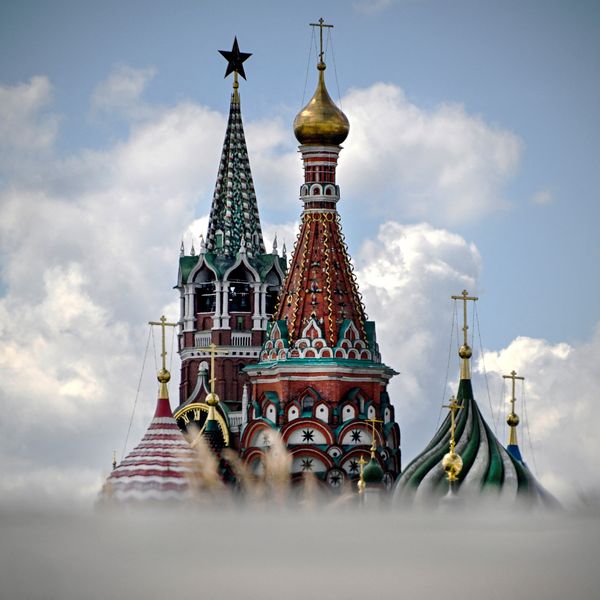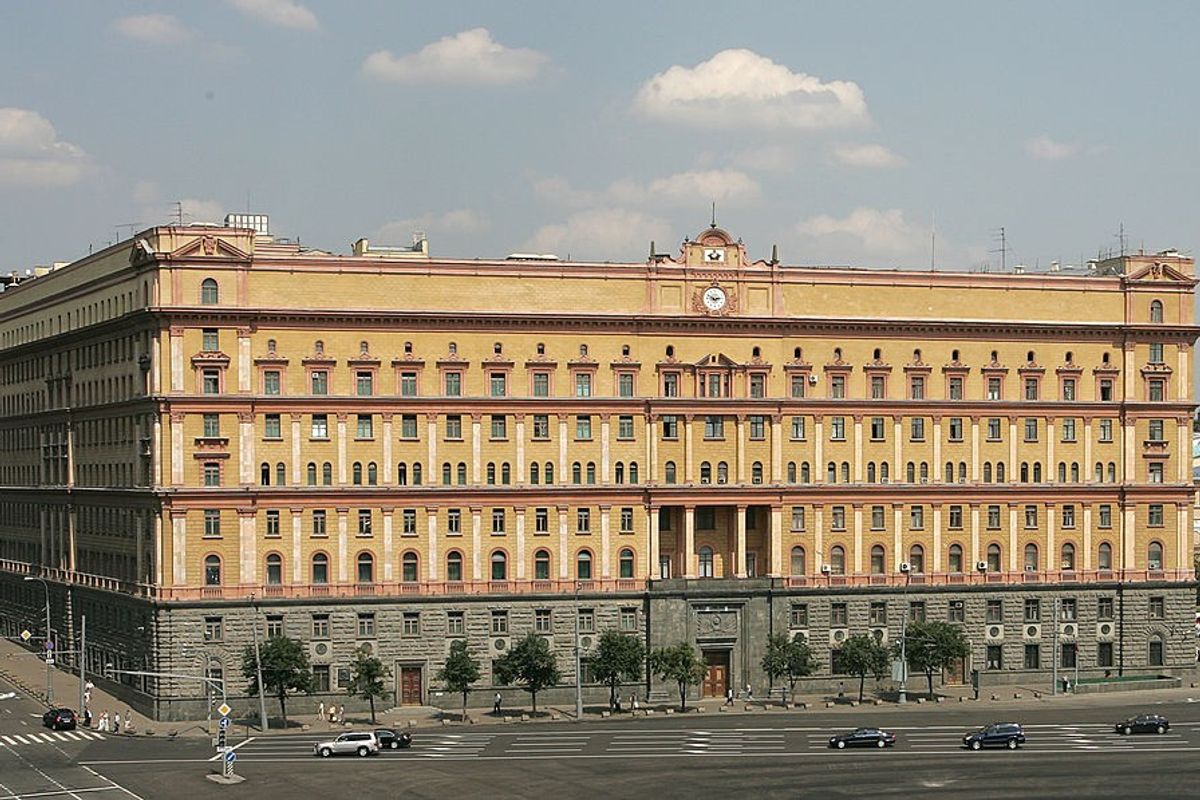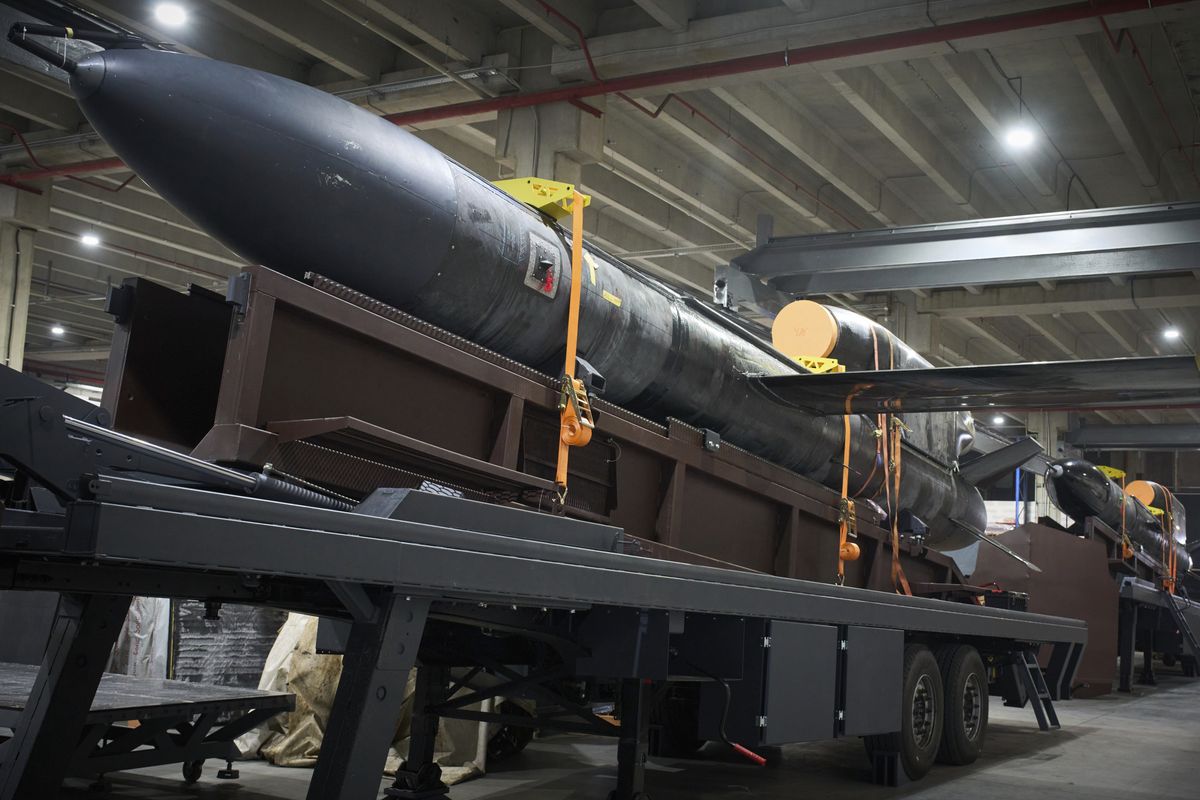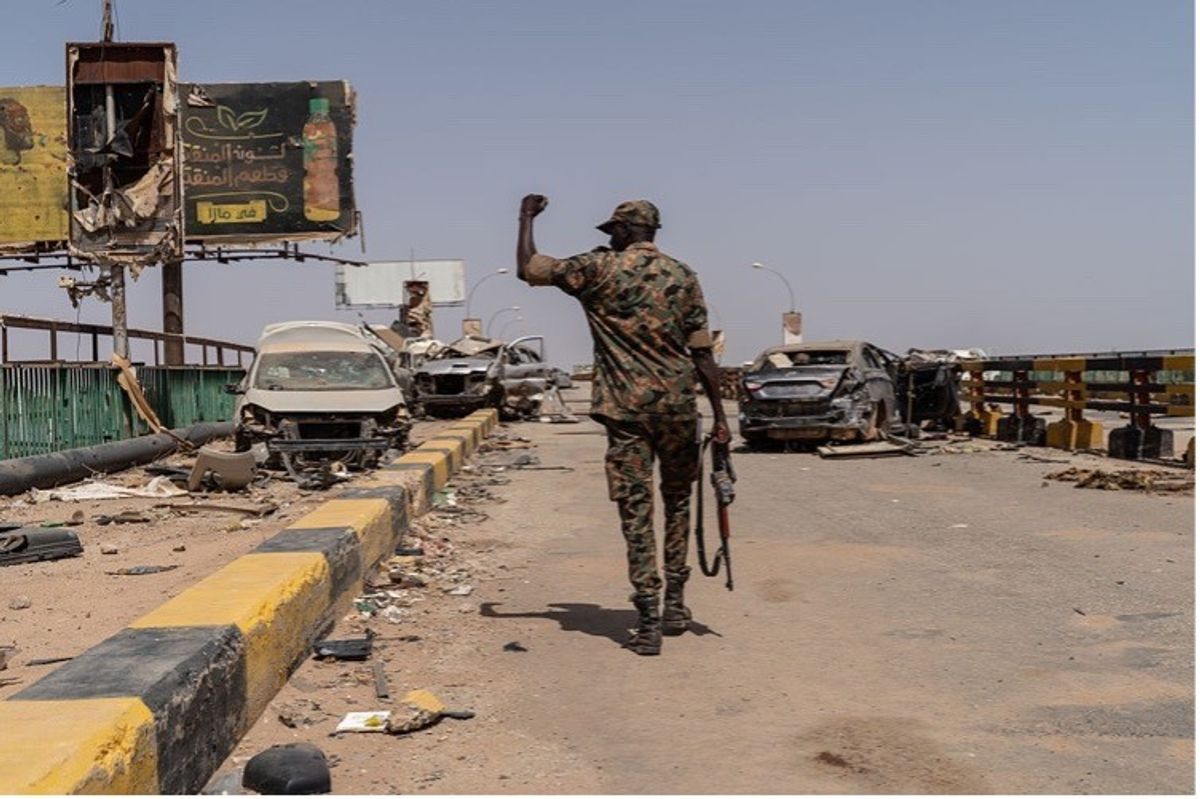OPINION — “The Russian economy has been both bolstered and distorted by this war. Specifically, the Russian government has had to turbo-charge their defense sector and in so doing they have created very strong inflationary pressures throughout the economy, but especially in the civil sector. They've responded to that with high interest rates to hold inflation down. The [head of the Russian Central Bank] Elvira Nabiullina has said the overnight rate, the prime rate, is over 21% right now. That is choking off the viability of the civil economy, so one has a huge, oversized, defense sector, but an anemic civil sector. And that defense sector…is not a productive center, not a productive economy for the nation, it's productive for the fighting of the war, but beyond that it has pretty much swamped things out. It appears that it will be very difficult to unwind such an imbalance, and we'll need to consider that as we go forward.”
That wasn’t a global economist speaking; it was Army Gen. Christopher G. Cavoli, Commander, United States European Command and NATO Supreme Allied Commander Europe (SACEUR), testifying last Thursday before the Senate Armed Services Committee.
A specialist in Russia and fluent in the language he learned to speak and read 30 years ago, Cavoli had been asked by Committee Chairman Sen. Roger Wicker (R-Miss.) to talk about the Russian economy after the general had described the current situation in the Russia/Ukraine war.
In his prepared statement for the hearing, Cavoli provided more Russian economic data.
He said that last September, “Russia announced a 25% increase in defense spending, which represents 6.3% of its Gross Domestic Product.” That was the fourth consecutive year that Russia had increased its defense spending to fund the war in Ukraine.
Cavoli added, “All told, Russia’s defense budget will account for 40% of all government expenditures… its highest level since the Cold War. As a direct result of its defense spending, Russian investments in its industrial base have reduced national unemployment to 2.4%. The Russian economy is on a war footing and will remain so for the foreseeable future.”
Cavoli also laid out the equipment losses Russia has suffered that have required a transformation of its economy.
“Russian ground forces in Ukraine have lost an estimated 3,000 tanks, 9,000 armored vehicles, 13,000 artillery systems, and over 400 air defense systems in the past year,” Cavoli said, “but is on pace to replace them all. Russia has expanded its industrial production, opened new manufacturing facilities, and converted commercial production lines for military purposes. As a result, the Russian defense industrial base is expected to roll out 1,500 tanks, 3,000 armored vehicles, and 200 Iskander ballistic and cruise missiles this year. (Comparatively, the United States only produces about 135 tanks per year and no longer produces new Bradley Fighting Vehicles.) Additionally, we anticipate Russia to produce 250,000 artillery shells per month, which puts it on track to build a stockpile three times greater than the United States and Europe combined.”
Experts are gathering at The Cipher Brief’s NatSecEDGE conference June 5-6 in Austin, TX to talk about the future of war. Be a part of the conversation.
A view of the Ukraine battlefield
During the two-hour, eighteen-minute Senate committee session, Cavoli also gave a three-dimensional picture of the fighting. His summary of the current battlefield situation is worth quoting in detail.
“If we start in the northern part of the active [Russia/Ukraine war] battlefield area, that's the place where Ukraine last summer pushed an advance into Russia in an area called Kursk, and they took a large part of Kursk,” Cavoli began. “This is where the Russians introduced North Korean troops to help push the Ukrainians back out. They [the Russians] set an original goal of the end of September [2024] to have the Ukrainians out of Kursk — the Ukrainians today are still in Kursk.
“There is a sizable [Ukraine] force holding a sizable, diminished but sizable, chunk of ground inside Russia in Kursk Oblast right now and they're holding on very good defensive terrain. South of there, in Belgorod, the Ukrainians a couple of weeks ago pushed a smaller counter- offensive back into Russia, so we still have a back and forth going up in that area.
“If we come down inside of Ukraine to some of the big battlefields up in Luhansk…there's the city just west of the old Bakhmut called Chasiv Yar. The Ukrainians and the Russians have been fighting over this city…for about eight months now. In recent weeks, the Russian offensives have sort of petered out. They had been decreasing in scale, moving from company size to platoon size, now basically small groups of [Russian] infantry men trying to rush forward under artillery fire. They have failed to gain ground in the last couple of weeks. In fact, the Ukrainians have taken a little bit of ground back from them.
“If we come farther south, we get to Pokrovsk in Donetsk Province, where the Russians continue to try to take Pokrovsk. They are stalled out on their trying to encircle [that city]. They got pretty close, but the Ukrainians have held the Russians back.”
Cavoli also summarized the broader situation.
“The Russians seem to be suffering from paucity of armored vehicles and a lack of manpower. The Ukrainians, on their side, have assumed very strong defensive positions, well dug in and appear to have solved some of their manpower problems that were so acute last autumn. They've increased the pool of people available for mobilization. They’ve increased the pool for voluntary recruitment, and they've done a good job squeezing people out of headquarters for the front.”
As for new weapons, Cavoli said, “Both sides are relying on long-range attack: The Russians largely with cruise missiles and glide bombs…The Ukrainians are relying mainly on one-way attack drones as well as some indigenous-produced cruise missile systems, one in particular that I've got in mind that we could talk about in close session.”
Cavoli also provided details of the Russia/North Korea involvement. “Russia’s introduction of 12,000 North Korean troops into the Kursk Oblast this past fall constituted an egregious escalation of the conflict,” he said, adding that it created “the opportunity for North Korean soldiers to gain experience from modern combat and take their lessons back to the Indo-Pacific.”
The Cipher Brief brings expert-level context to national and global security stories. It’s never been more important to understand what’s happening in the world. Upgrade your access by becoming a subscriber.
Lessons from the war – for the U.S.
Cavoli disclosed that the U.S. military’s “Joint Force had established a variety of cells and organizations deliberately to study the lessons of the [Ukraine/Russia] conflict…at a classified and unclassified level and we have learned an awful lot.”
Cavoli described: one example of a change in U.S. tactics. “Our use of drones has changed deeply across the Joint Force,” he said. “Before this conflict in the U.S. Army, for example, we had very few but large drones associated with large units. Now we're proliferating smaller drones to smaller units and having a larger number of drones in lower [unit] hands – a fundamental change in the way we're doing business.”
Asked by Sen. Jack Reed (D-R.I.) what would be the effect on Ukrainian forces if the Trump administration withheld war material, spare parts and intelligence advice, Cavoli provided a very frank response: “It would obviously have a rapid and dilatory effect on their ability to fight, Senator. The Ukrainians depend on us principally, uniquely I should say, for their high-end anti-aircraft systems, so the things that shoot down the ballistic missiles and the long-range attack missiles that the Russians throw at them almost daily. That is mainly supplied by the United States.”
He added, “If the Ukrainians were not able to receive intelligence from us they would struggle to target, especially in-depth, operational-level targets such as command posts, logistics areas and things like that which require…very good intelligence to do.”
Asked for the best leverage the Trump administration would have in negotiations with Putin, Cavoli responded, “Continuing to assist Ukraine on the battlefield daily, I think is very important. Continuing to enlist not just the material assistance, but the unity of our allies in this effort to support Ukraine I think is also an important function to be done. I'll leave it to the administration to determine how to achieve leverage against the other side.”
Will U.S. support continue?
I should point out here the mixed signals the Trump administration appears to be sending on providing support to Ukraine. Remember that early last month, Trump briefly cut military and intelligence support for Ukraine. Last Wednesday, Defense Secretary Pete Hegseth announced he will not attend the April 11 meeting of the Ukraine contact group of nations that donate weapons and financial support to Ukraine, the group initiated and chaired until recently by former-Defense Secretary Lloyd Austin.
Cavoli, during his testimony, also pointed out the danger in another possible move under consideration by the Trump administration – giving up having a U.S. general officer lead NATO as SACEUR.
Asked by Sen. Joni Ernst (R-Iowa) at Thursday’s hearing if he believed it important to have an American as SACEUR, Cavoli said, “That of course would be a policy decision…I merely laid out the advantages and disadvantages of it from a military perspective,” adding, “From a military perspective it’s problematic.”
In the face of fears that Trump wants to cut U.S. forces in Europe, Cavoli, in his prepared statement, defended the current number saying, “Credible deterrence requires the presence of combat-capable forces and a sufficient force presence to convince Russia that any military action harmful to the interests of the United States will be met with force. Therefore, USEUCOM must prepare the forces assigned and allocated to us to fight and win; and develop key infrastructure throughout the theater to support readiness and operations.”
Cavoli noted that “USEUCOM currently commands nearly 80,000 American service members throughout the European theater. This is a reduction from the 105,000 service members postured in Europe after Russia invaded Ukraine in 2022.”
That was Cavoli’s understated plea that his forces not be cut. I share the general’s hope that President Trump and members of his administration will show more support for the NATO alliance.
The Cipher Brief is committed to publishing a range of perspectives on national security issues submitted by deeply experienced national security professionals.
Opinions expressed are those of the author and do not represent the views or opinions of The Cipher Brief.
Have a perspective to share based on your experience in the national security field? Send it to Editor@thecipherbrief.com for publication consideration.
Read more expert-driven national security insights, perspective and analysis in The Cipher Brief










